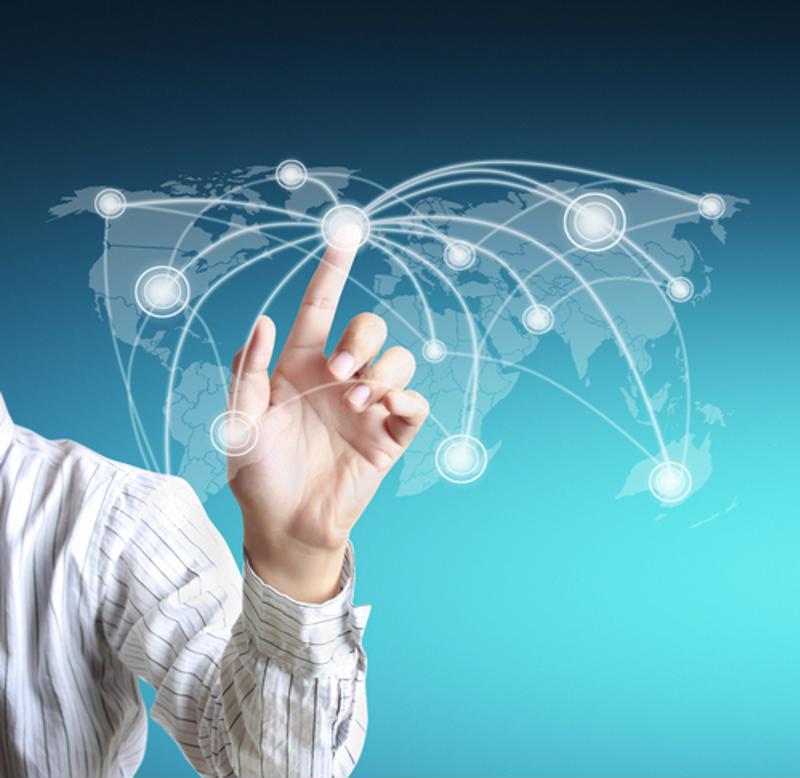
COVID-19 provides a valuable use case for public safety IoT
By Max BurkhalterMay 4, 2020
The COVID-19 pandemic has had a profound impact on nearly every commercial industry in the world, leading to major supply chain disruptions, sudden business closures and a great deal of uncertainty about the future. However, this ongoing health emergency offers public safety officials an opportunity to study how individuals, communities and organizations respond to global crises. More specifically, the coronavirus outbreak has revealed that many companies are unprepared for disasters that impact their workforce - from transportation delays to social distancing guidelines, there's no shortage of interruptions to the average citizen's daily routine. In the years ahead, experts from around the world will be analyzing the response to COVID-19 to help inform future disaster planning strategies and to create a more reliable safety net for businesses and their employees.
Assessing the COVID-19 response
Since COVID-19 was officially named a pandemic by the World Health Organization, nearly every organization has taken steps to mitigate the spread of the infection. Most employers continue to send out regular updates about the outbreak, along with health tips for employees in self-isolation. While these efforts have been useful for maintaining some level of normalcy, they fall short of a comprehensive response. According to a survey from Gartner, 50% of companies reported moving 81% or more of their workforce to a temporary work-from-home basis until the pandemic passes. Of course, some industries (manufacturing, health care, etc.) are not able to support remote employees, which raises questions about the role of IT and automation.
In terms of government response, The New York Times estimates that 316 million people in at least 42 states have been urged to stay at home and practice social distancing. Although these shelter-in-place directives vary in terms of severity and possible enforcement, they represent a clear effort to reduce the spread of the infection through public safety initiatives. However, without real-time mobility data and a centralized management platform, organizations may struggle to identify at-risk communities and provide them with the resources they need to wait out the pandemic. That's where cutting-edge technology can help.

How IoT is helping combat COVID-19
Even before the coronavirus started making headlines in early March, urban centers across the U.S. had already been deploying smart city infrastructure and flexible IT systems. As noted by Business Insider, smart cities use internet-of-things devices (connected sensors, lights, traffic control systems, etc.) to collect and analyze massive amounts of data, helping improve public utilities and services. When the global outbreak transformed into a major health emergency, government officials started looking for new ways to protect the public from infection, keep citizens informed and study the impact of the pandemic.
Here are two interesting use cases that speak to the value of IoT systems when dealing with global crises:
Australia launches contact tracing app
In late-April, the federal government of Australia released a new contact tracing application, named COVIDSafe, which is helping health professionals track possible infections. The voluntary app is compatible with both Android and iOS, and uses Bluetooth functionality to "make a series of digital handshakes" between citizens who are within one-and-a-half meters of each other for 15 minutes or more. Using this data, health experts can determine the date and time when such interactions occur, along with the proximity and length of exposure.
Despite the privacy concerns, government officials have assured the public that all collected data is "securely encrypted and stored" for 21 days before being deleted from their mobile phones. What's more, no physical location data is actually collected by the app, and users must consent to sharing their interactions with the National COVIDSafe Data Store. Generally speaking, the more people who use COVIDSafe, the more accurate models it can produce. Considering the pandemic is still ongoing, government officials and health professionals will likely use this IoT-enabled platform to identify at-risk citizens and prevent the virus from spreading.
Apple releases COVID-19 app based on CDC recommendations
Alongside government institutions, private companies are also developing new methods of tracking the spread of COVID-19 through IoT-oriented systems. Apple's new mobile application (called Apple COVID-19) is intended to provide the general public with timely updates and guidance on how to prevent possible infections. Users start by answering a series of targeted questions that touch on key risk factors, recent interactions and present symptoms. Once the questionnaire is completed, users are sent personalized recommendations from the Centers for Disease Control and Prevention on:
- Social distancing and self-isolation guidelines
- Tips for monitoring COVID-19 symptoms
- Whether testing is required
- When to contact a medical provider
This screening tool is not meant to replace healthcare providers' medical advice - it's designed as a resource for individuals who want to understand their comorbidities and those looking for general best practices in virus prevention. However, for public safety officials to transform this raw data into actionable insights they need to ensure their data infrastructure is agile, flexible and secure.
Perle offers powerful networking tools that help organizations maximize their IT assets and maintain performance in times of uncertainty. Our industrial-grade Ethernet switches and durable console servers are designed with big data environments in mind, especially those that rely on the uninterrupted flow of information. Read some of our customer stories to learn more.



